第4章 AN APPRECIATIONBY CHARLES DARWIN(4)
renewed experience of England" have convinced him "how incomparably superior is civilised life to the spiritual sterility of half-savage existence, even if it were passed in the Garden of Eden."The following is the list of H.W.Bates' published works:
Contributions to an insect Fauna of the Amazon Valley, Paper read before the Linnean Society, June 21, 1861; The Naturalist on the Amazons, a Record of Adventure, Habits of Animals, Sketches of Brazilian and Indian Life...during Eleven Years of Travel, 1863; 3rd Edition, 1873, with a Memoir of the author by E.Clodd to reprint of unabridged edition, 1892.
Bates was for many years the editor of the Transactions of the Royal Geographical Society; the following works were edited and revised, or supplemented by him:--Mrs.Somerville's Physical Geography, 1870; A.Humbert, Japan and the Japanese, 1874; C.
Koldewey, the German Arctic Expedition, 1874; P.E.Warburton, Journey across the Western Interior of Australia, 1875; Cassell's Illustrated Travels, 6 vols., 1869-1875; E.Whymper, Travels among the Great Andes of the Equator (Introduction to Appendix volume), 1892, etc.; Central America, the West Indies and South America; Stanford's Compendium of Geography and Travel, 2nd revised Ed., 1882; he also added a list of Coleoptera collected by J.S.Jameson on the Aruwini to the latter's Story of the Rear Column of the Emin Pasha Relief Expedition, etc., 1890; and an appendix to a catalogue of Phytophaga by H.Clark, 1866, etc.;and contributed a biographical notice of Keith Johnson to J.
Thomson's Central African Lakes and Back, 1881.
He contributed largely to the Zoologist, Entomological Society's journal, Annals and Magazine of Natural History, and Entomologist.
LIFE--Memoir by E.Clodd, 1892; short notice in Clodd's Pioneers of Evolution, 1897.
AUTHOR'S PREFACE TO THE EDITION OF 1864
HAVING been urged to prepare a new edition of this work for a wider circle than that contemplated in the former one, I have thought it advisable to condense those portions which, treating of abstruse scientific questions, presuppose a larger amount of Natural History knowledge than an author has a right to expect of the general reader.The personal narrative has been left entire, together with those descriptive details likely to interest all classes, young and old, relating to the great river itself, and the wonderful country through which it flows,--the luxuriant primaeval forests that clothe almost every part of it, the climate, productions, and inhabitants.
Signs are not wanting that this fertile, but scantily peopled region will soon become, through recent efforts of the Peruvian and Brazilian governments to make it accessible and colonise it, of far higher importance to the nations of Northern Europe than it has been hitherto.The full significance of the title, the "largest river in the world," which we are all taught in our schoolboy days to apply to the Amazons, without having a distinct idea of its magnitude, will then become apparent to the English public.It will be new to most people, that this noble stream has recently been navigated by steamers to a distance of 2200geographical miles from its mouth at Para, or double the distance which vessels are able to reach on the Yang-tze-Kiang, the largest river of the old world; the depth of water in the dry season being about seven fathoms up to this terminus of navigation.It is not, however, the length of the trunk stream, that has earned for the Amazons the appellation of the "Mediterranean of South America," given it by the Brazilians of Para; but the network of by-channels and lakes, which everywhere accompanies its course at a distance from the banks, and which adds many thousands of miles of easy inland navigation to the total presented by the main river and its tributaries.The Peruvians, especially, if I may judge from letters received within the past few weeks, seem to be stirring themselves to grasp the advantages which the possession of the upper course of the river places within their reach.Vessels of heavy tonnage have arrived in Para, from England, with materials for the formation of shipbuilding establishments, at a point situated two thousand miles from the mouth of the river.Peruvian steamers have navigated from the Andes to the Atlantic, and a quantity of cotton (now exported for the first time), the product of the rich and healthy country bordering the Upper Amazons, has been conveyed by this means, and shipped from Para to Europe.The probability of general curiosity in England being excited before long with regard to this hitherto neglected country, will be considered, of itself, a sufficient reason for placing an account of its natural features and present condition within reach of all readers.
LONDON, January, 1864.